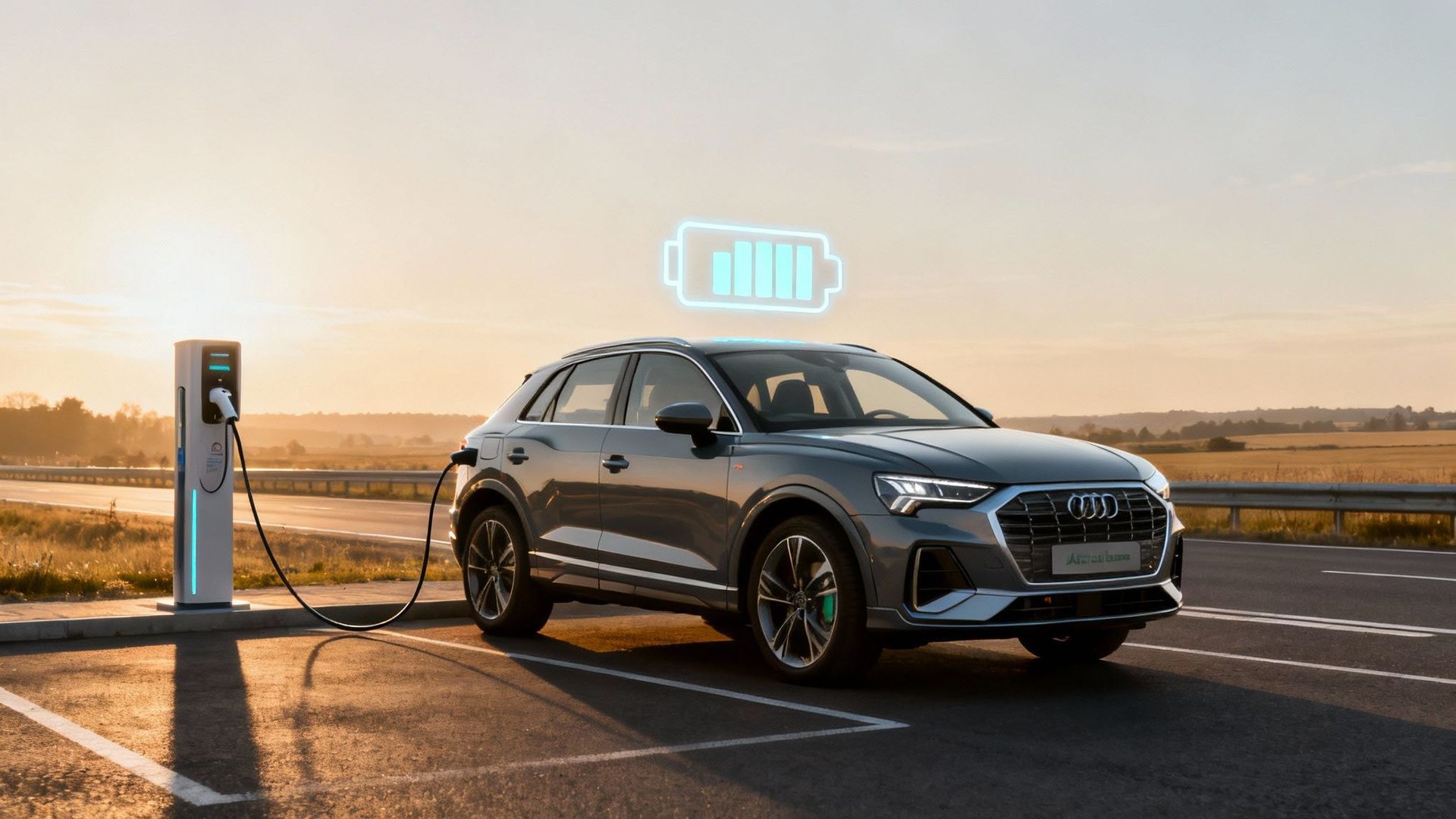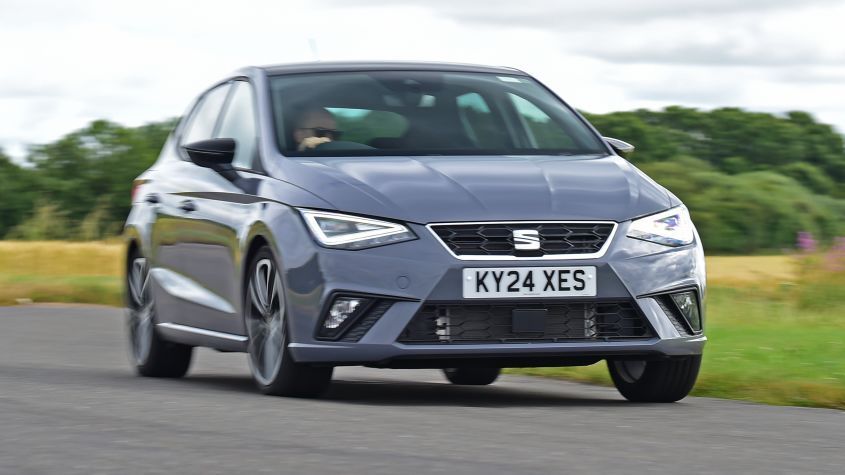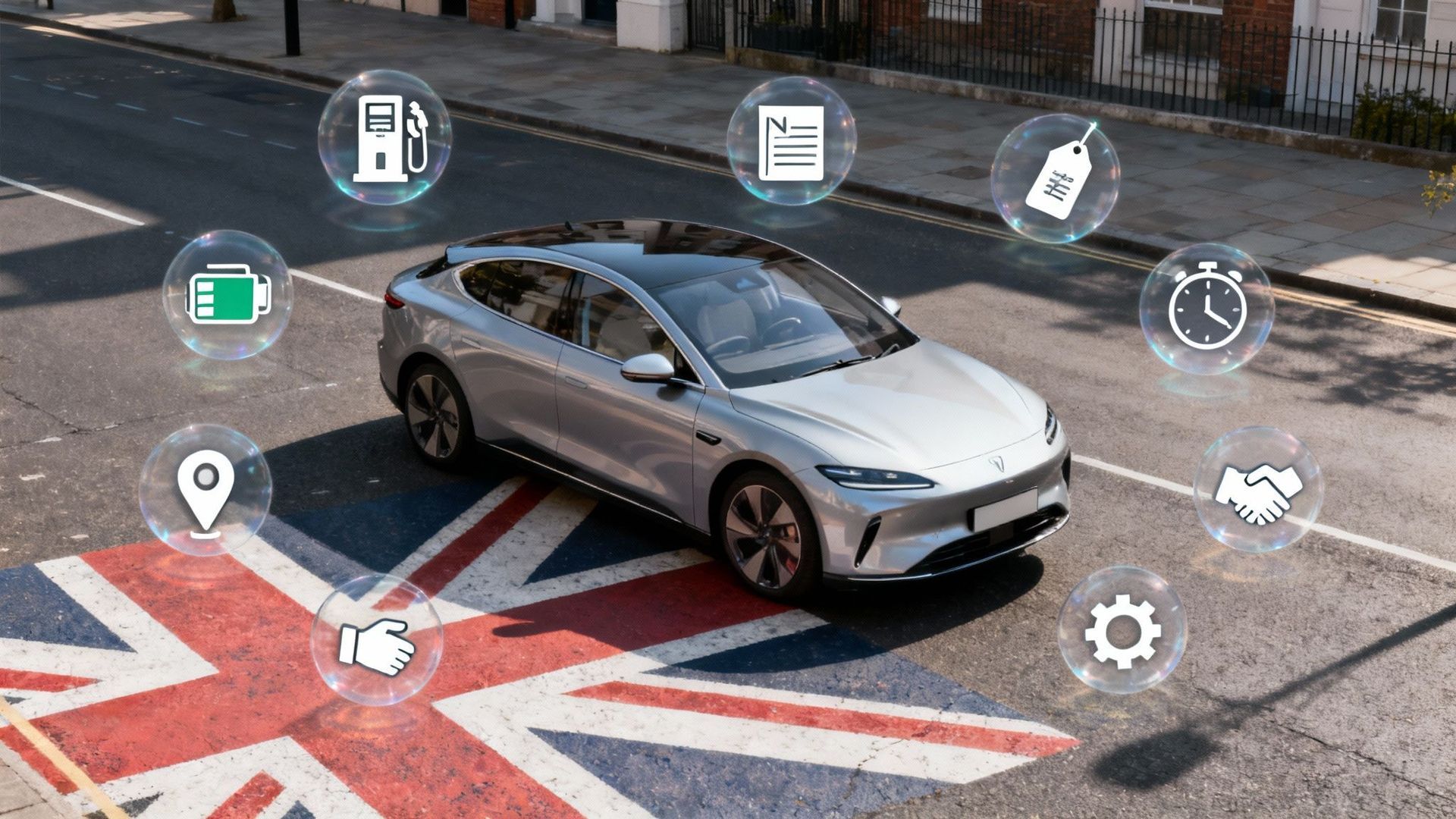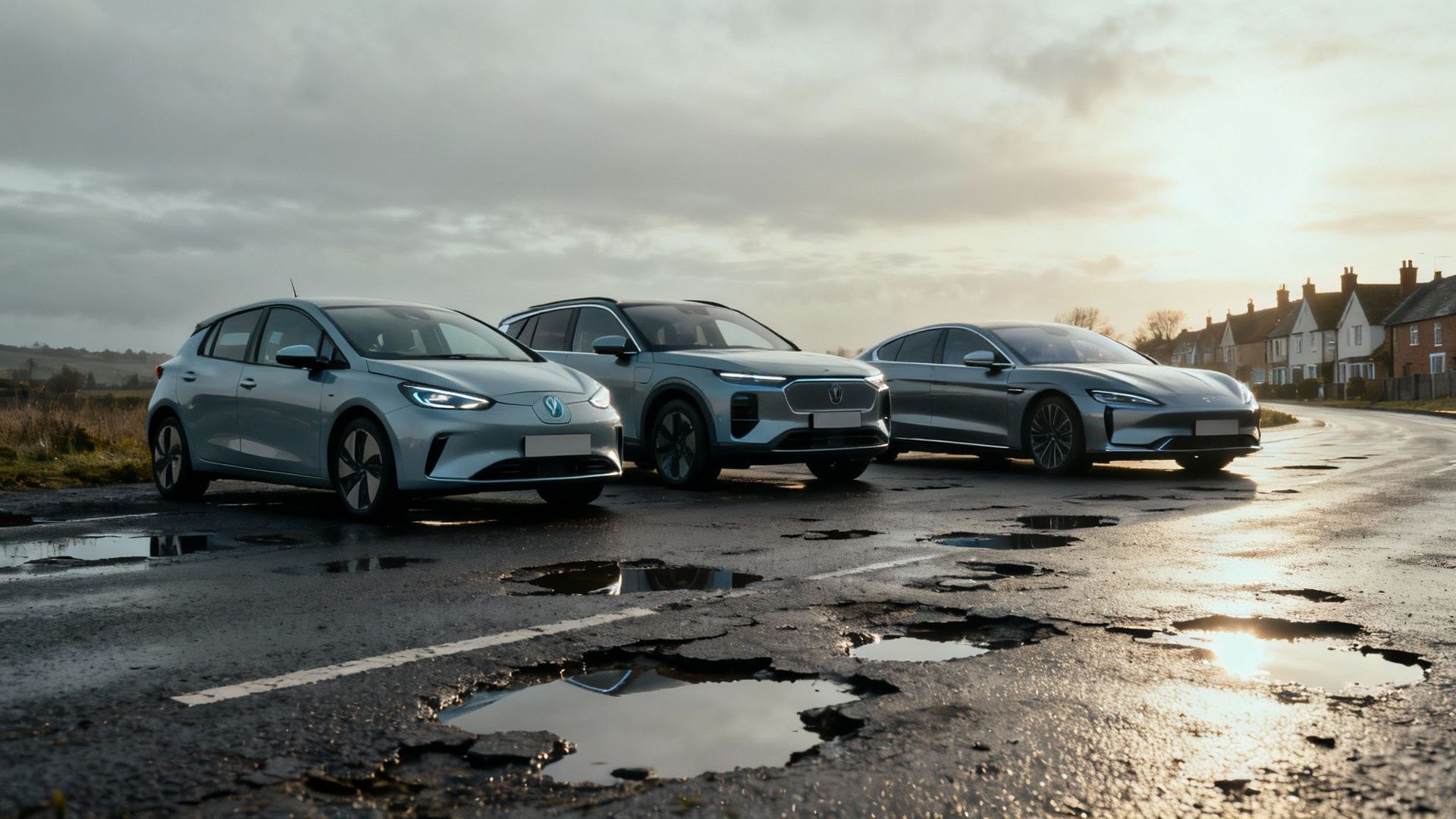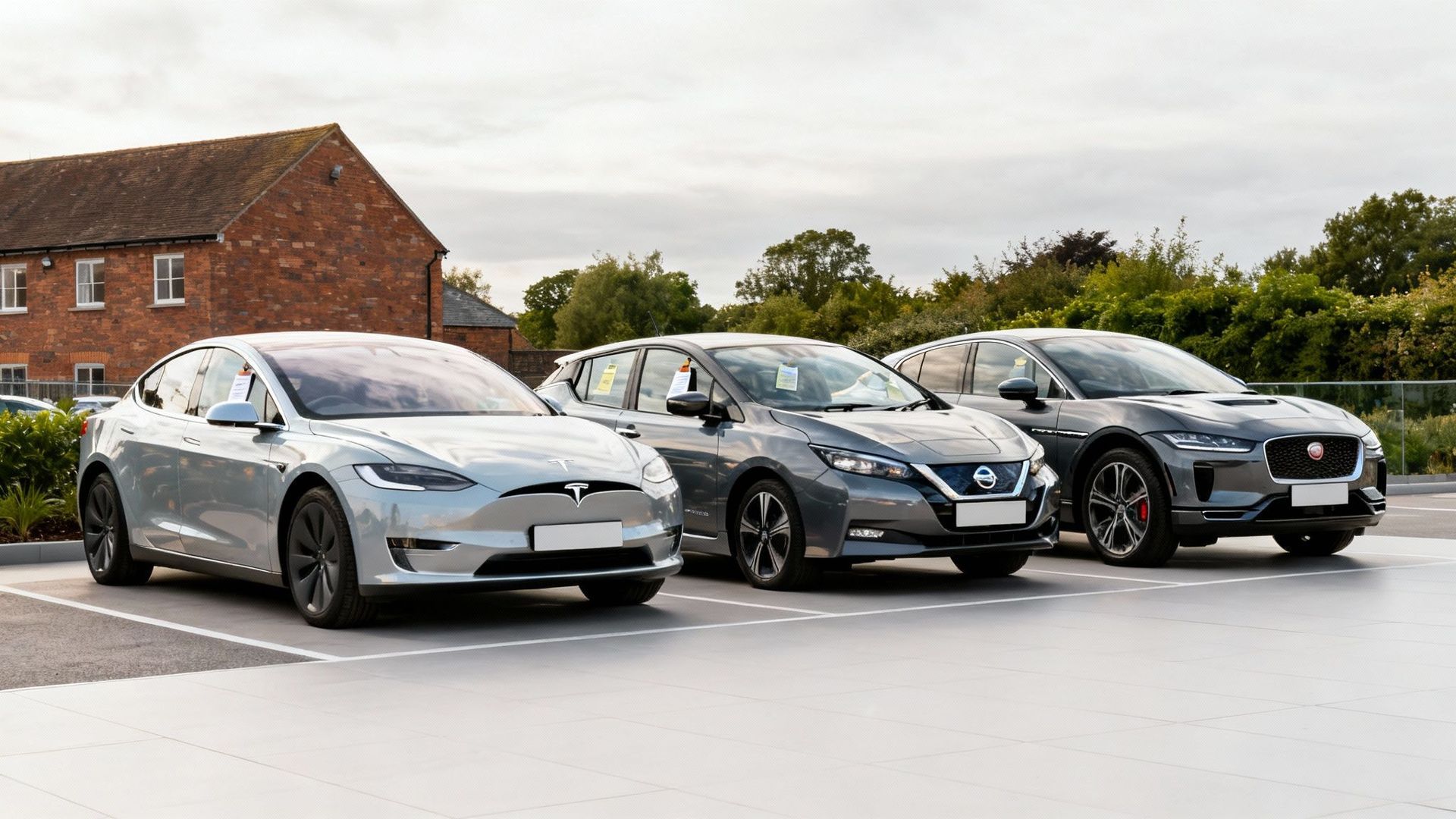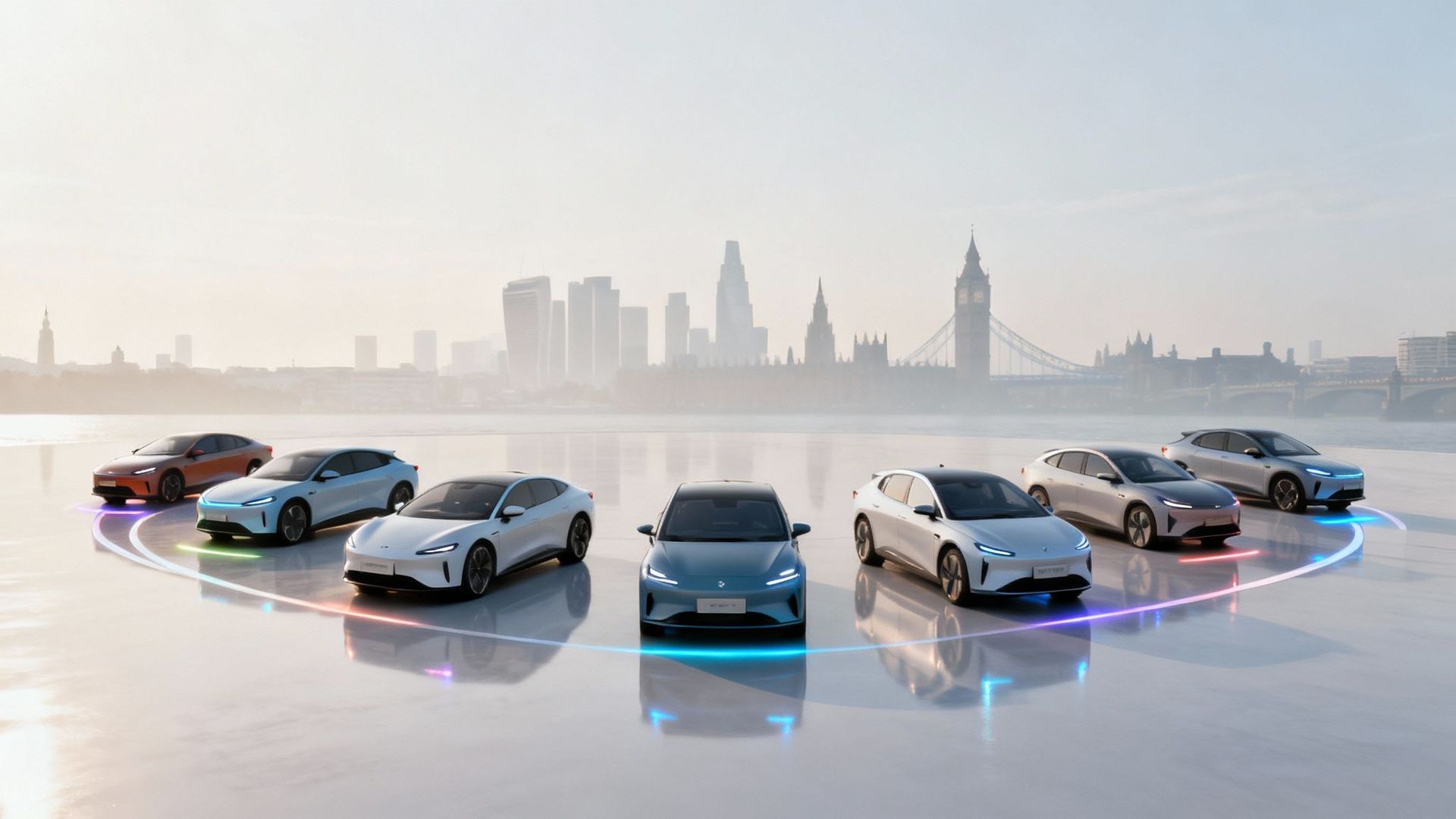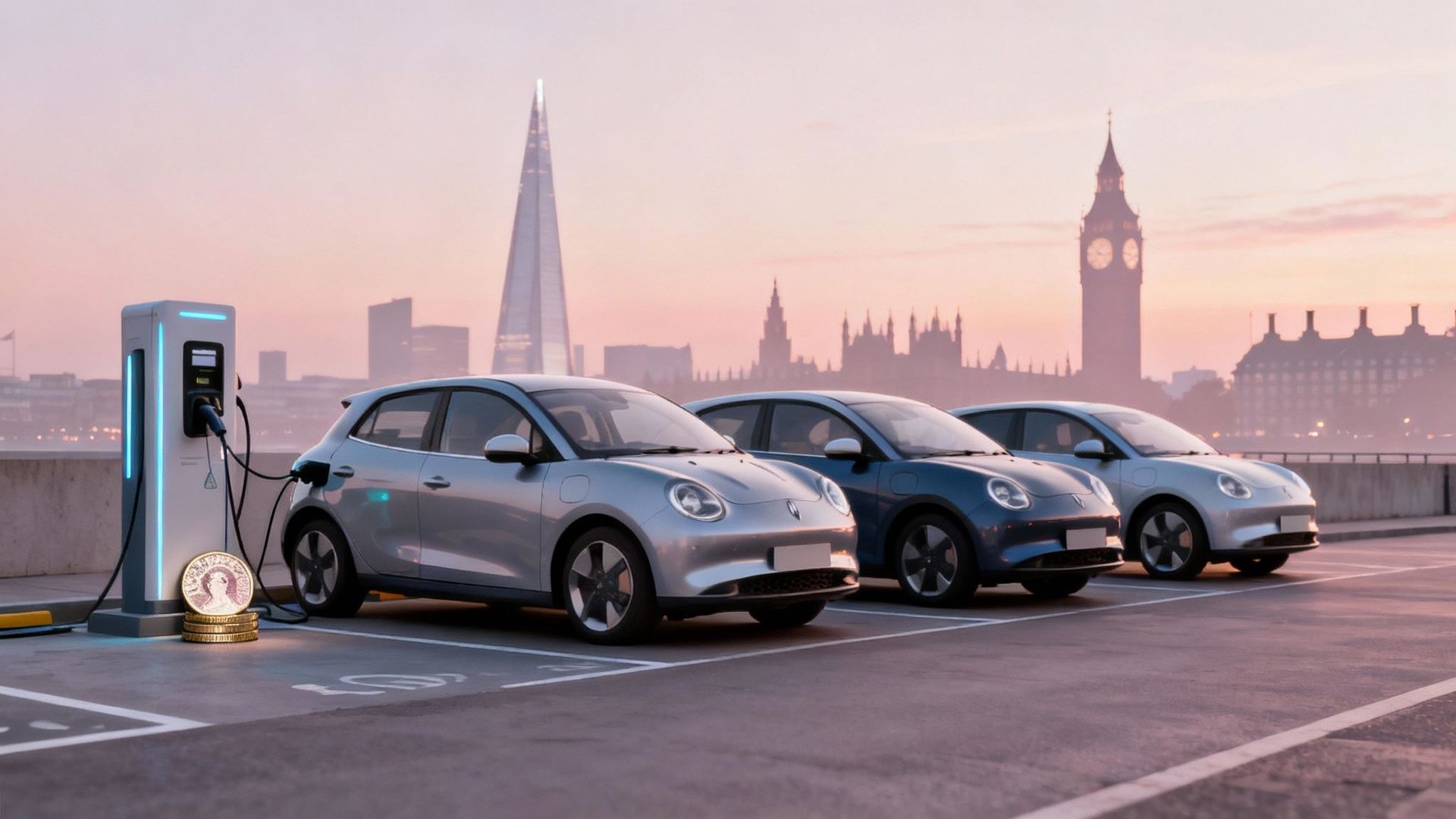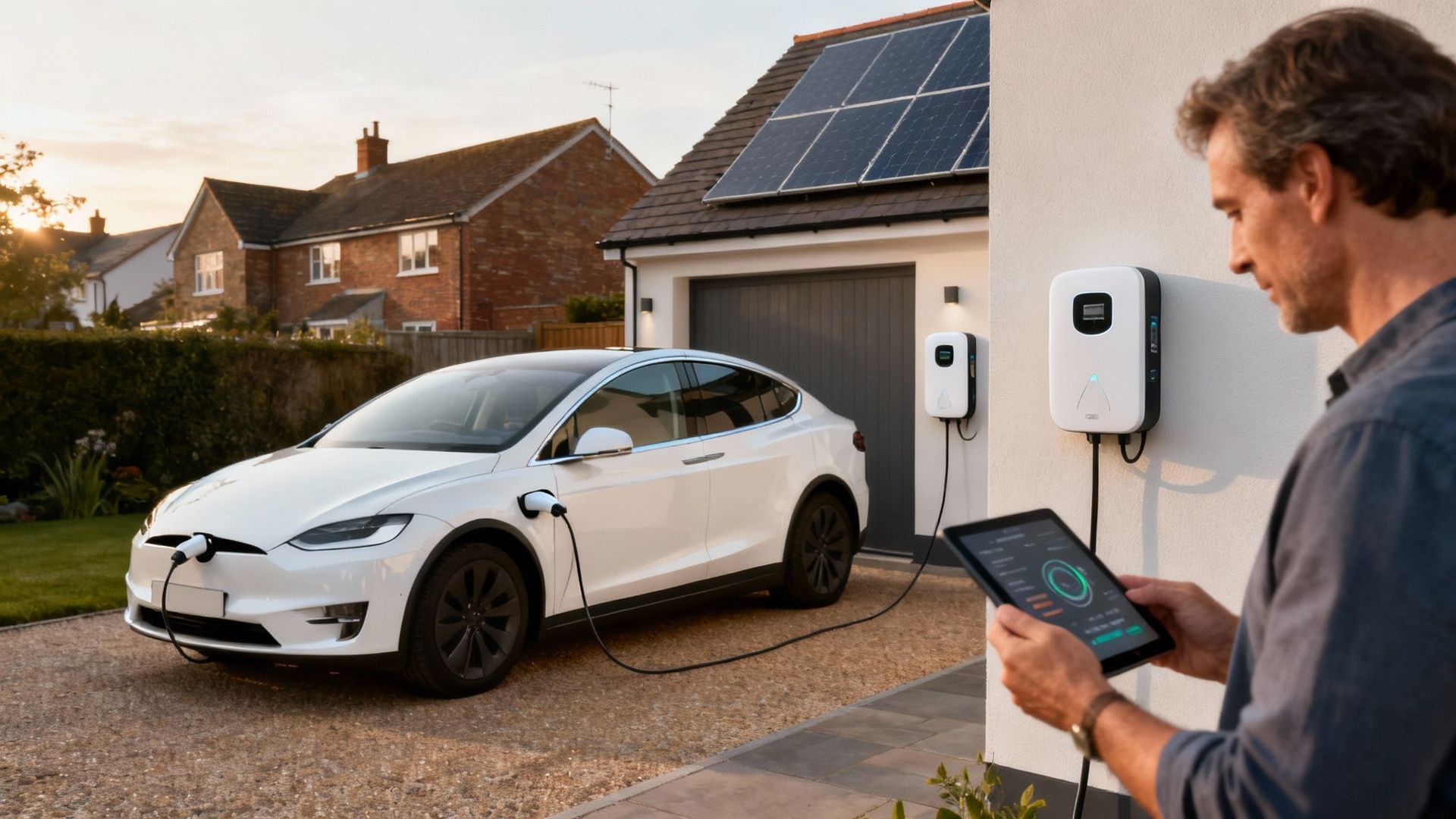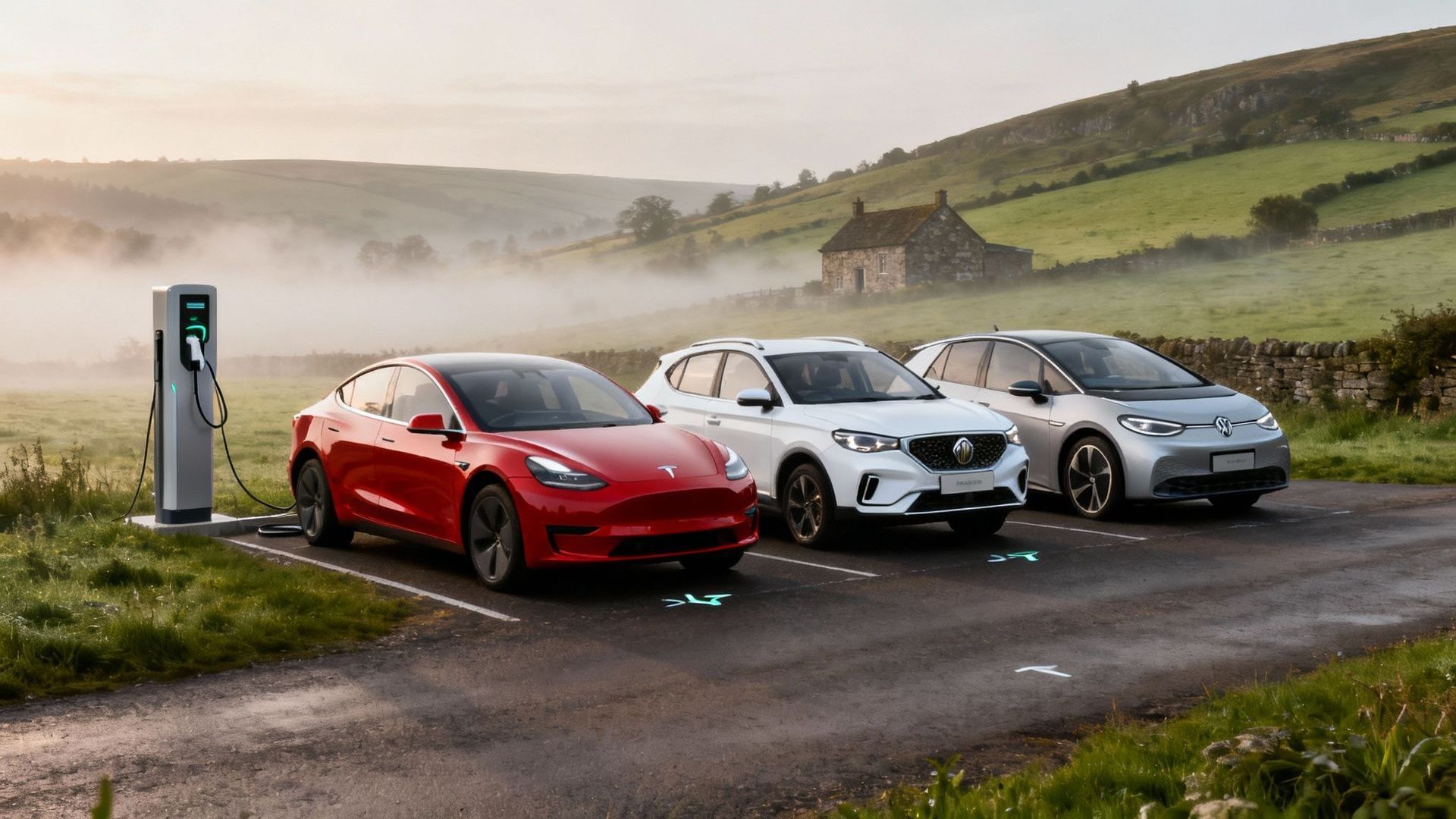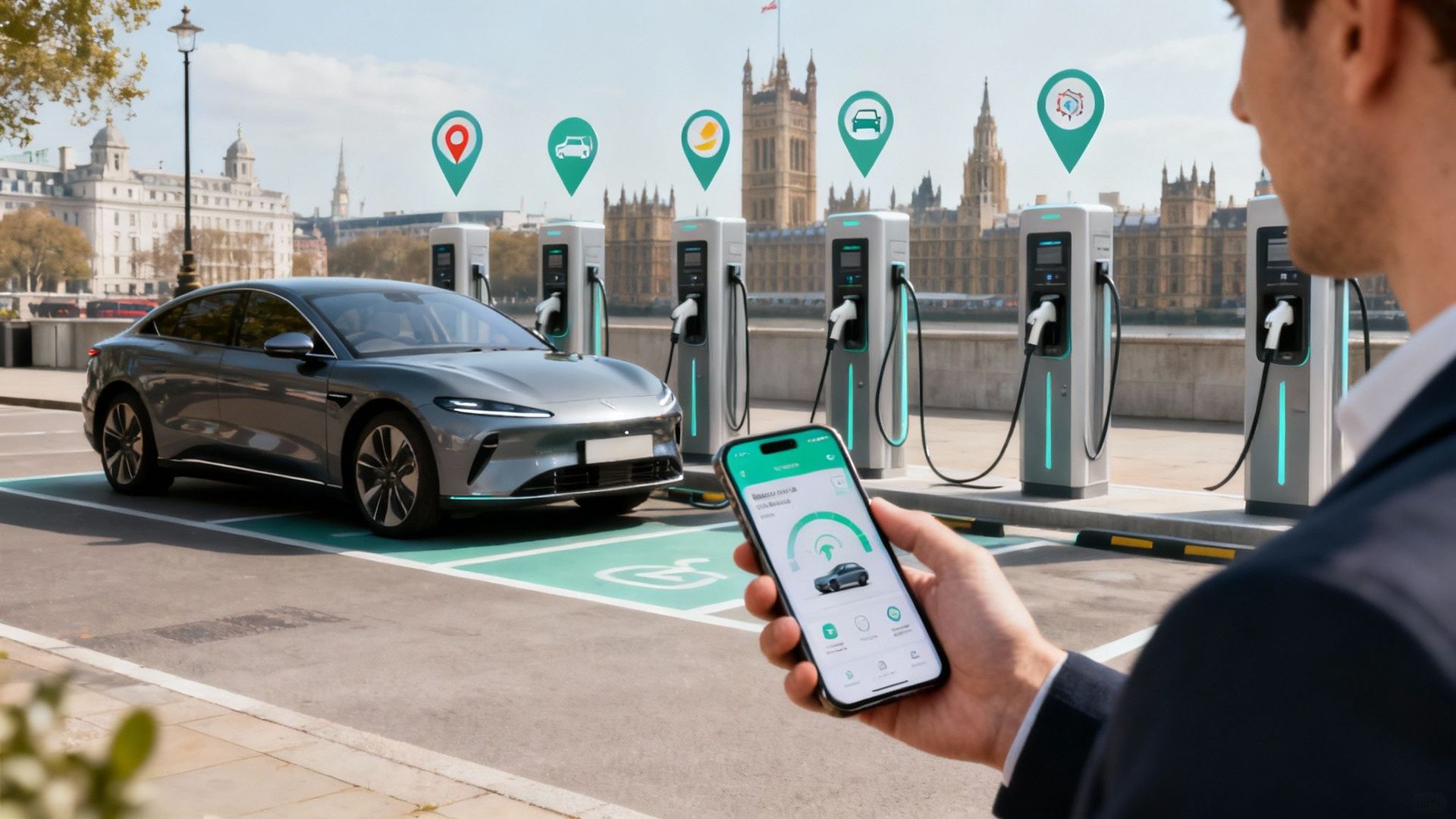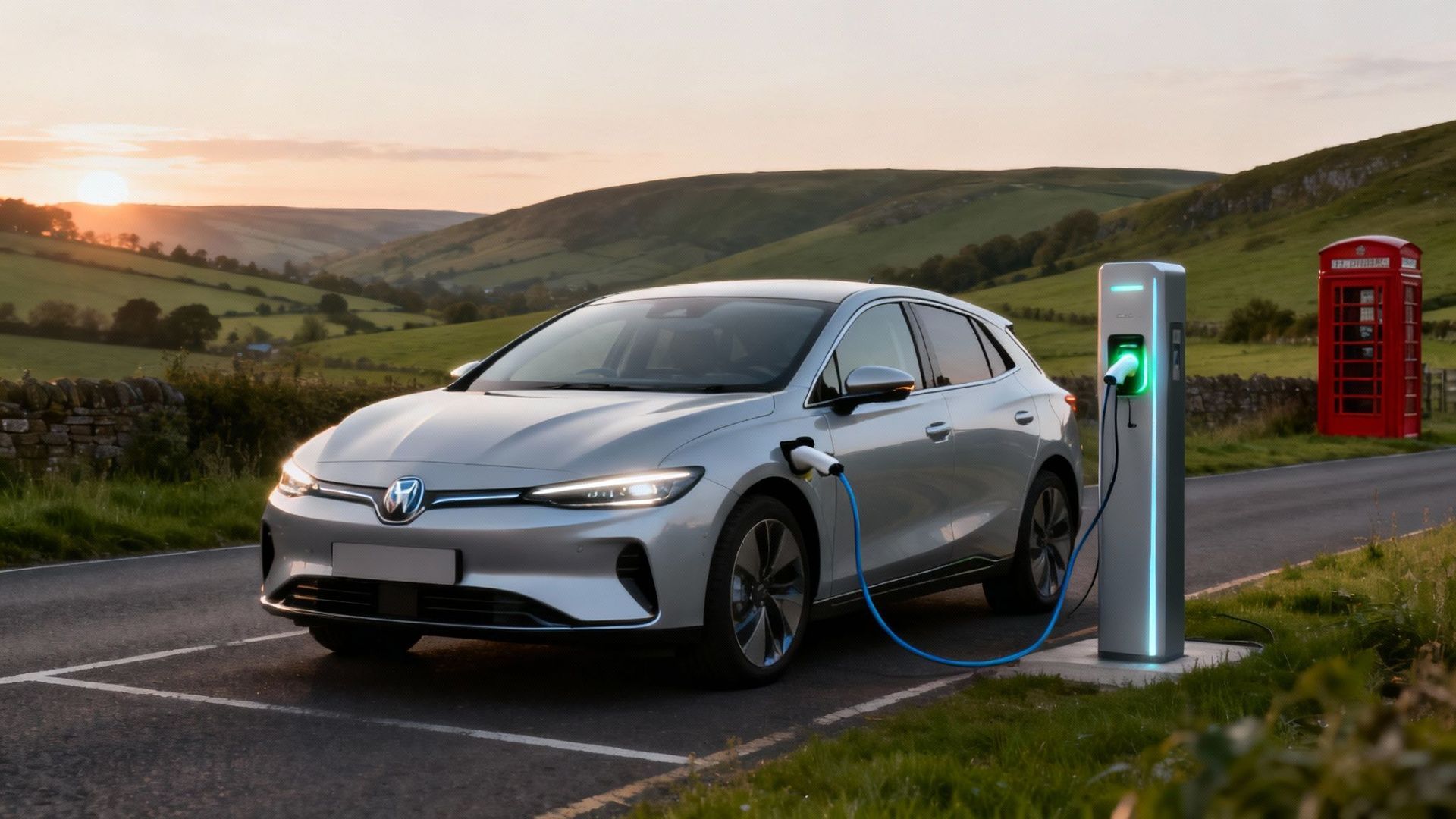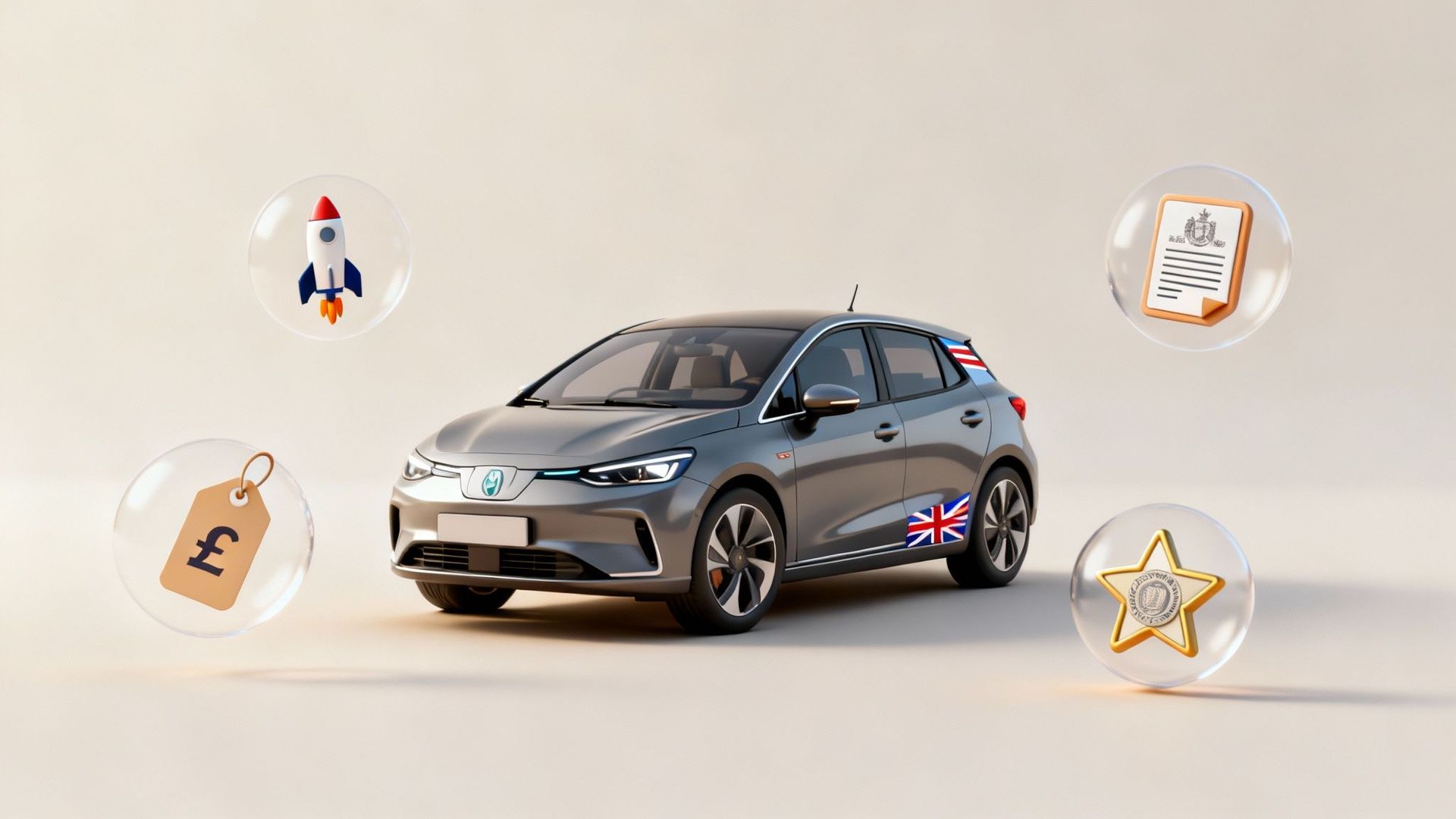A Brutally Honest Kia Soul EV Review
Right, let's be honest. The Kia Soul EV has always been the automotive equivalent of a pair of Crocs. It’s unapologetically boxy, a bit odd, but surprisingly brilliant at what it’s designed to do. For UK drivers navigating the used market, this quirky electric hatchback is a serious contender if you value substance over swoopy, aerodynamic lines that look like they've melted. It’s the sensible, if slightly eccentric, choice in a sea of electric cars that are all starting to look depressingly similar.
Is the Kia Soul EV Still Worth a Look?
So, you're pondering a car that looks like it was designed with a set square and a ruler. Fair play to you. The Kia Soul EV has always been a bit of an oddball – a proper Marmite motor that you either totally get or you just don't. While newer, shinier EVs steal the headlines, the second-generation Soul EV, especially the 64kWh model, remains a seriously clever buy on the second-hand market.
This is a car that puts common sense way ahead of catwalk cool. Forget those teardrop shapes that look fantastic but give you the rear headroom of a postbox. The Soul EV leans into its right angles, and the result is an interior that feels far more spacious and airy than its compact footprint would have you believe. This is form following function, even if the form is a bit… rectangular.
The Sensible Box on Wheels
What does this focus on practicality actually mean for you day-to-day? Well, for starters, you could probably wear a top hat while driving. More importantly, it means you get a car that's incredibly easy to live with, especially around Britain's towns and cities.
Here’s a quick look at what makes it such a compelling, if curious, option:
- Deceptive Practicality: That upright stance gives you brilliant all-round visibility and an unexpectedly roomy cabin. It genuinely feels bigger inside than many of its rivals.
- Solid Real-World Range: The 64kWh battery pack delivers a properly useful range, getting rid of the anxiety that came with the first wave of electric cars.
- Effortless City Performance: With instant torque from the electric motor, it’s delightfully nippy off the line at traffic lights and a piece of cake to park.
Before we get into the nitty-gritty of its quirks and qualities, let's lay out the key specs. This isn't the most glamorous part, but it’s the foundation of any good car review and gives us a solid baseline.
Here’s a quick overview of the vital statistics for the 64kWh Kia Soul EV.
Kia Soul EV Key Specifications
| Specification | Figure |
|---|---|
| Battery Capacity | 64kWh (usable) |
| Official WLTP Range | 280 miles |
| Real-World Range | Approx. 230-260 miles |
| Power Output | 201 bhp |
| Torque | 395 Nm |
| 0-62 mph | 7.9 seconds |
| Top Speed | 104 mph |
| Max DC Charging Speed | 77 kW |
| Max AC Charging Speed | 7.2 kW |
| Boot Capacity (seats up) | 315 litres |
| Boot Capacity (seats down) | 1,339 litres |
These numbers paint a picture of a very capable and practical electric car, which we'll explore in more detail.
The Kia Soul EV is a great reminder that sometimes the most logical design isn't the most fashionable one. It's a car built for the realities of daily life, not for impressing the neighbours – unless your neighbours happen to be architects with a soft spot for brutalism.
A Design That Divides Opinion
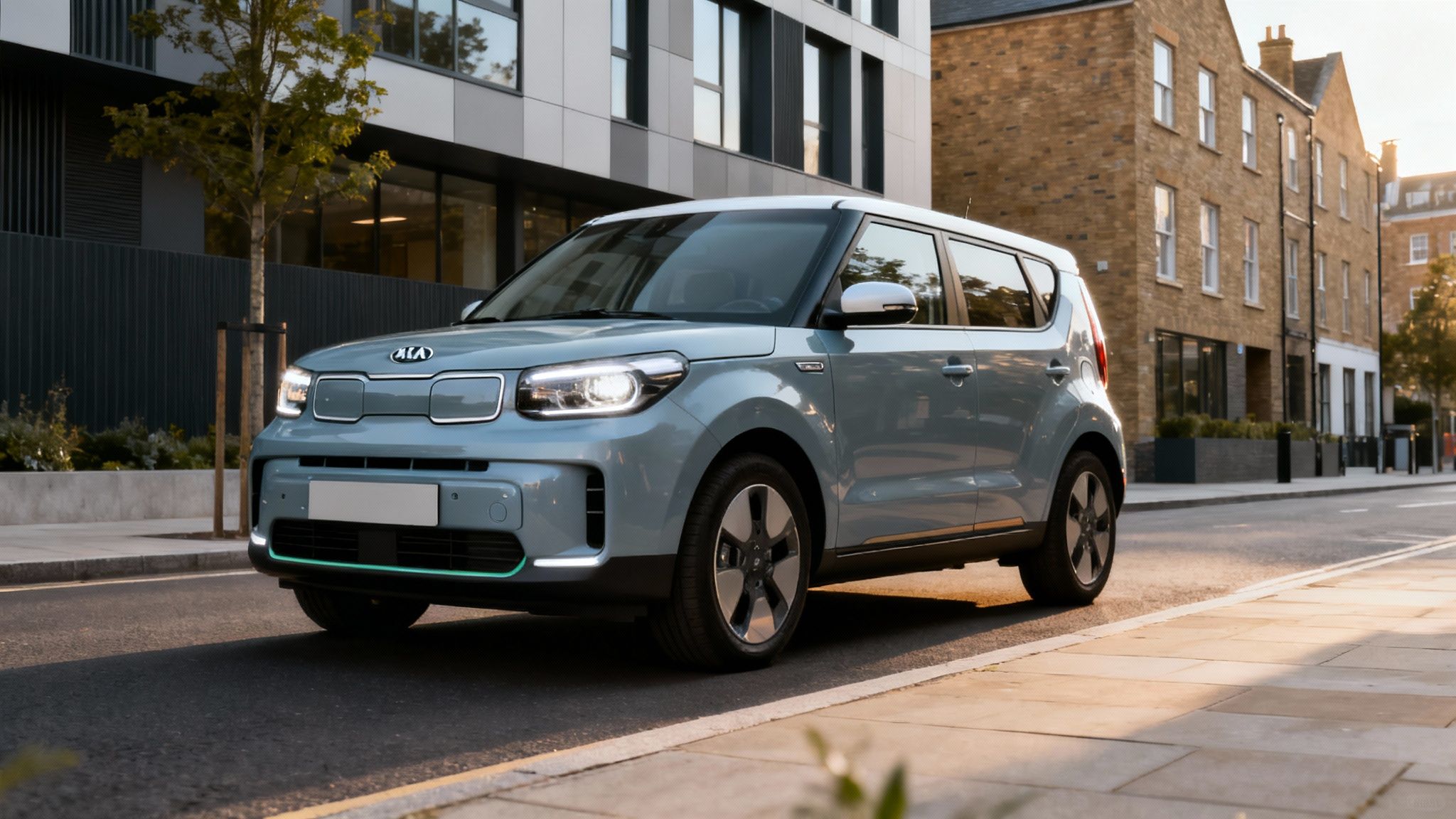
Let's not beat about the bush: the Kia Soul EV isn't going to win any beauty contests. It’s styled with all the aerodynamic grace of a garden shed on wheels, and its unashamedly boxy shape divides opinion more than pineapple on pizza. You either get it, and find its quirky, function-first form utterly charming, or you think it’s a design experiment that’s outstayed its welcome.
There really is no middle ground. While other car makers chase swooping, coupe-like rooflines that look great but punish anyone in the back seats, Kia has gone in the complete opposite direction. This car isn’t trying to be sleek or sporty; it’s a fantastically useful box, and in that regard, it’s a triumph.
And it’s this stubborn refusal to follow the crowd that is its secret weapon. That tall, almost van-like profile translates directly into one of the most practical and airy cabins you’ll find in this class of car. If you’re over six feet tall, getting into the Soul EV is a genuine revelation.
An Interior Built for Real Life
Step inside, and that function-over-form approach continues, but it works surprisingly well. The dashboard isn't a minimalist slab dominated by a single touchscreen. Refreshingly, you get proper physical buttons and dials for essential things like the heating and air conditioning, which are a thousand times easier to use on the move than prodding at a screen.
The quality of the materials is what you might call 'hard-wearing'. You won't find swathes of plush leather or open-pore wood, but everything feels solid and screwed together properly, as if it’s been built to handle the chaos of family life. This is a cabin designed to be lived in, not just admired from afar.
The real showstopper, though, is the incredible sense of space.
- Exceptional Headroom: Taller drivers and passengers, this is your car. You could genuinely wear a top hat in here without it even grazing the headlining.
- Commanding Visibility: The huge, upright windows and high seating position give you a brilliant view of the road, making the car a breeze to thread through tight city streets and slot into parking spaces.
- Proper Rear Seats: Unlike so many rivals where the back seats are a token gesture, two adults can sit comfortably in the back of the Soul EV without their knees being jammed into the front seats.
The Kia Soul EV is proof that a car's design doesn't have to please everyone to be brilliant. It’s a masterclass in putting the needs of the people inside the car before the opinions of those looking at it from the outside.
How the Soul EV Actually Drives on UK Roads
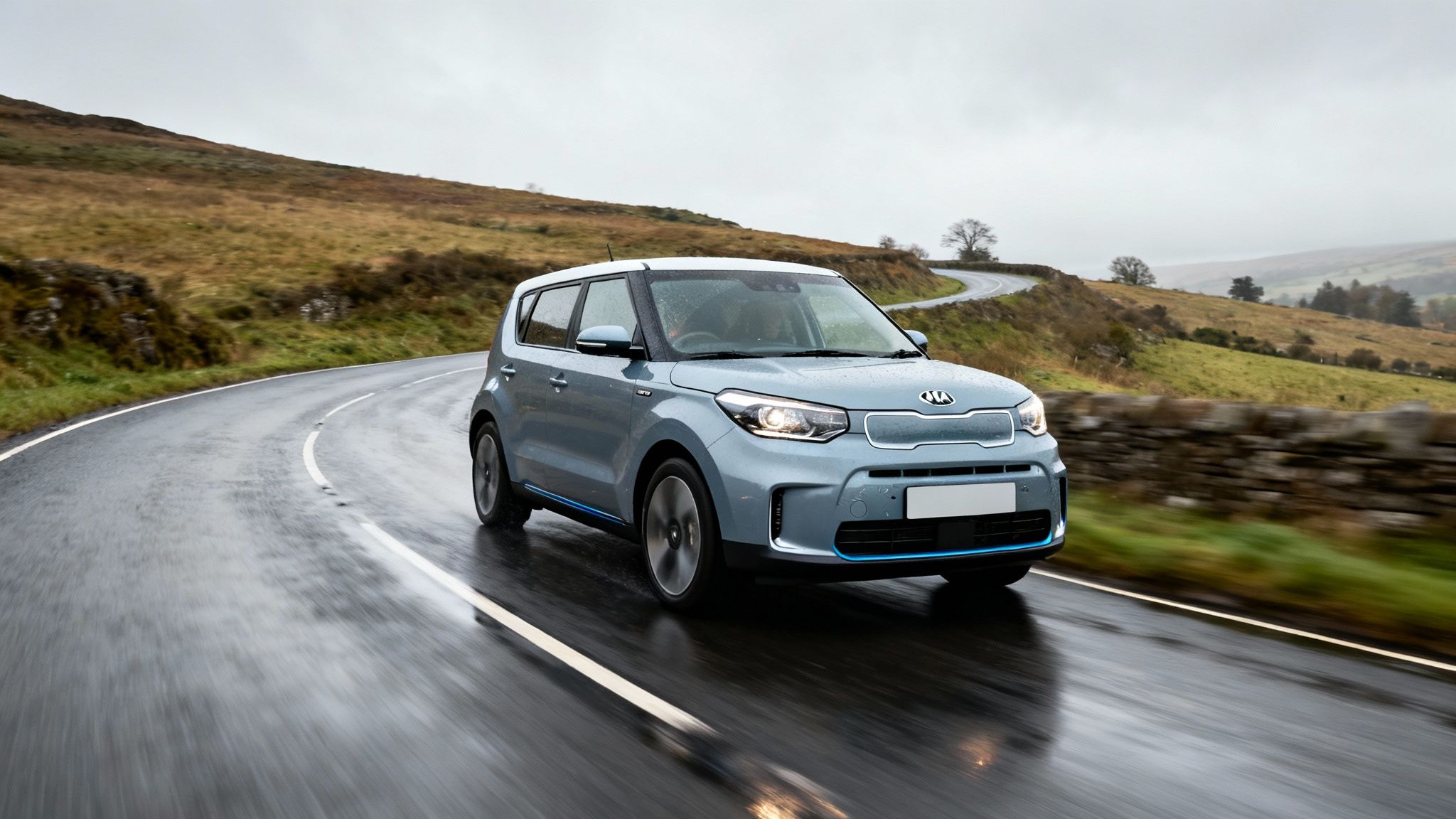
So, it looks like a toaster and has an interior built for giants. Brilliant. But what’s it actually like to pilot this electric box around Britain’s uniquely terrible roads? The answer is, rather surprisingly, a whole lot of fun, especially where you least expect it.
Around town, the Soul EV is completely in its element. That instant electric torque, all 395 Nm of it, makes it properly nippy. Forget sluggishly pulling away from traffic lights; a gentle prod of the accelerator will see you zip ahead of most combustion-engined cars with a satisfying, silent urgency. It turns the dreary stop-start of city commuting into a bit of a game.
This immediate response makes darting through gaps in traffic an absolute doddle. Combine that with the excellent visibility from its greenhouse-like windows and light steering, and you have a car that feels perfectly suited to the urban jungle. It’s effortless, responsive, and genuinely enjoyable for the daily grind.
B-Road Manners and Motorway Miles
Right, so it’s great in the city, but what happens when you show it a proper British B-road? A tall, boxy car should, by the laws of physics, handle like a blancmange in a hurricane. And yet, the Soul EV manages to hold its own remarkably well.
The secret is the hefty 64kWh battery pack slung low in the chassis. This gives it a surprisingly low centre of gravity, which helps to counteract that top-heavy design. Sure, if you chuck it into a corner with wild abandon, there’s some noticeable body roll – it’s not a sports car. But for everyday driving, it feels reassuringly planted and stable.
Out on the motorway, things are a little more mixed.
- Noise Levels: It’s impressively quiet. There's a bit of wind noise from the upright windscreen and wing mirrors at 70 mph , but road and tyre noise are well-suppressed, making for a relaxed cruising experience.
- Ride Comfort: The suspension is tuned more for comfort than sportiness. It does a decent job of soaking up most bumps, but particularly nasty potholes can send a jolt through the cabin.
- Regenerative Braking: Kia’s system is excellent, with paddles on the steering wheel allowing you to adjust the level of regeneration. In its strongest setting, you can drive almost entirely with one pedal, which is fantastic for managing traffic flow.
The driving experience of the Kia Soul EV is a pleasant contradiction. It's a car that looks like it should be utterly dull to drive, but the instant power and stable handling make it an unexpectedly entertaining and competent companion on British roads.
It’s a far more engaging drive than its quirky exterior suggests, offering a blend of city-slicker agility and dependable open-road comfort that makes it a genuinely versatile machine. This Kia Soul EV review wouldn't be complete without acknowledging how well it balances these different driving demands.
Real World Range and Charging Realities
Right, let’s get down to the brass tacks. We need to talk about the two things that keep potential EV buyers up at night: how far does it really go, and how long does it take to charge?
The official WLTP figure for the 64kWh Kia Soul EV is a claimed 280 miles . As with any official stat, it's best to take that with a pinch of salt. It was probably clocked on a perfect day, downhill, with a strong tailwind.
In the real world of British A-roads and stop-start city traffic, the Soul EV still puts in a very solid performance. Through the warmer summer months, you can confidently expect to see 230 to 250 miles from a full charge. That’s easily a week's worth of commuting and school runs sorted without a single thought about plugging in.
Surviving A British Winter
Of course, when winter bites, so does the range. Cold weather is the enemy of battery performance. Crank up the heating, switch on the wipers and heated seats, and you’ll see that summer figure drop to a more realistic 180 to 200 miles .
While that’s a noticeable dip, it’s still a genuinely usable range that keeps the Soul EV well ahead of many rivals in the used market. It’s just something you need to be aware of.
This chart sums up what you can actually expect, season to season.
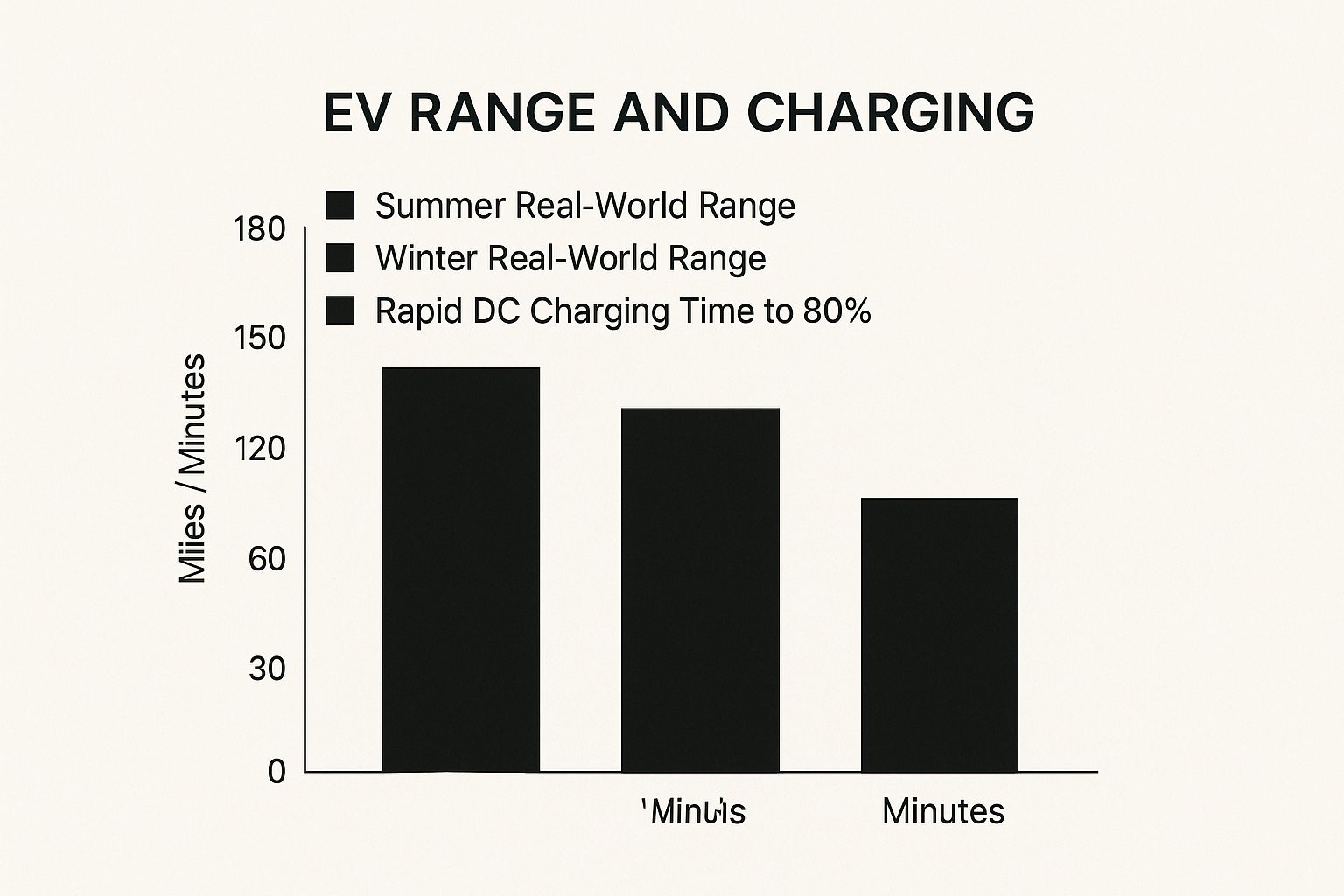
The seasonal drop is clear to see, but so is its decent rapid charging speed, which is your secret weapon for longer trips.
Topping Up The Battery
When you do need to plug in, you’ve got a few choices, each with its own pros and cons.
- Home Charging (The Smart Move): The vast majority of charging happens at home. With a standard 7kW wallbox installed, you can take the battery from empty to full in around 9.5 hours . Just plug it in when you get home, and it’s ready to go the next morning. It’s the cheapest and simplest way to live with an EV. If you're weighing up your options, we've got a guide on finding the best home EV chargers UK drivers recommend without going barmy.
- Public AC Charging (The "Top-Up" Charge): These are the chargers you often find at supermarkets and public car parks. They're typically 7kW or 22kW units. The Soul EV’s onboard AC charger is capped at 7.2kW , so you’re looking at the same slow-and-steady speeds as at home. It’s handy for grabbing an extra 20-30 miles while you shop, but it’s not for a full recharge.
- Rapid DC Charging (The Motorway Pit Stop): This is what you’ll use on long journeys. Find a DC rapid charger and the Soul EV can pull juice at a rate of up to 77kW . In practical terms, that means a 10-80% charge takes a very reasonable 45 minutes . It’s just enough time to grab a coffee and stretch your legs before you’re back on the road.
Below is a quick breakdown of what you can expect in terms of time and cost for the 64kWh model.
Kia Soul EV Charging Times and Costs
Here's a look at the estimated time and cost to fully charge your Kia Soul EV, based on common UK charging methods and average electricity rates.
| Charging Method | Time to Full Charge (approx.) | Estimated Cost (0-100%) |
|---|---|---|
| 3-Pin Plug (3kW) | 28-30 hours | £18.50 |
| Home Wallbox (7kW) | 9.5 hours | £18.50 |
| Public AC (22kW) | 9.5 hours | £25.00 |
| Rapid DC (50kW) | 70 mins (to 80%) | £42.00 |
| Ultra-Rapid DC (100kW+) | 45 mins (to 80%) | £45.00 |
Costs are estimates based on an average home tariff of 29p/kWh and public/rapid charging rates of 40-70p/kWh. Rates can vary significantly.
Ultimately, the key to living with a Soul EV is a simple mindset shift. Home charging is your new petrol station for daily driving, and the rapid chargers are there for those occasional long-distance treks. With that understood, the range and charging capabilities are more than enough for most people’s needs.
Practicality, Price, and Running Costs
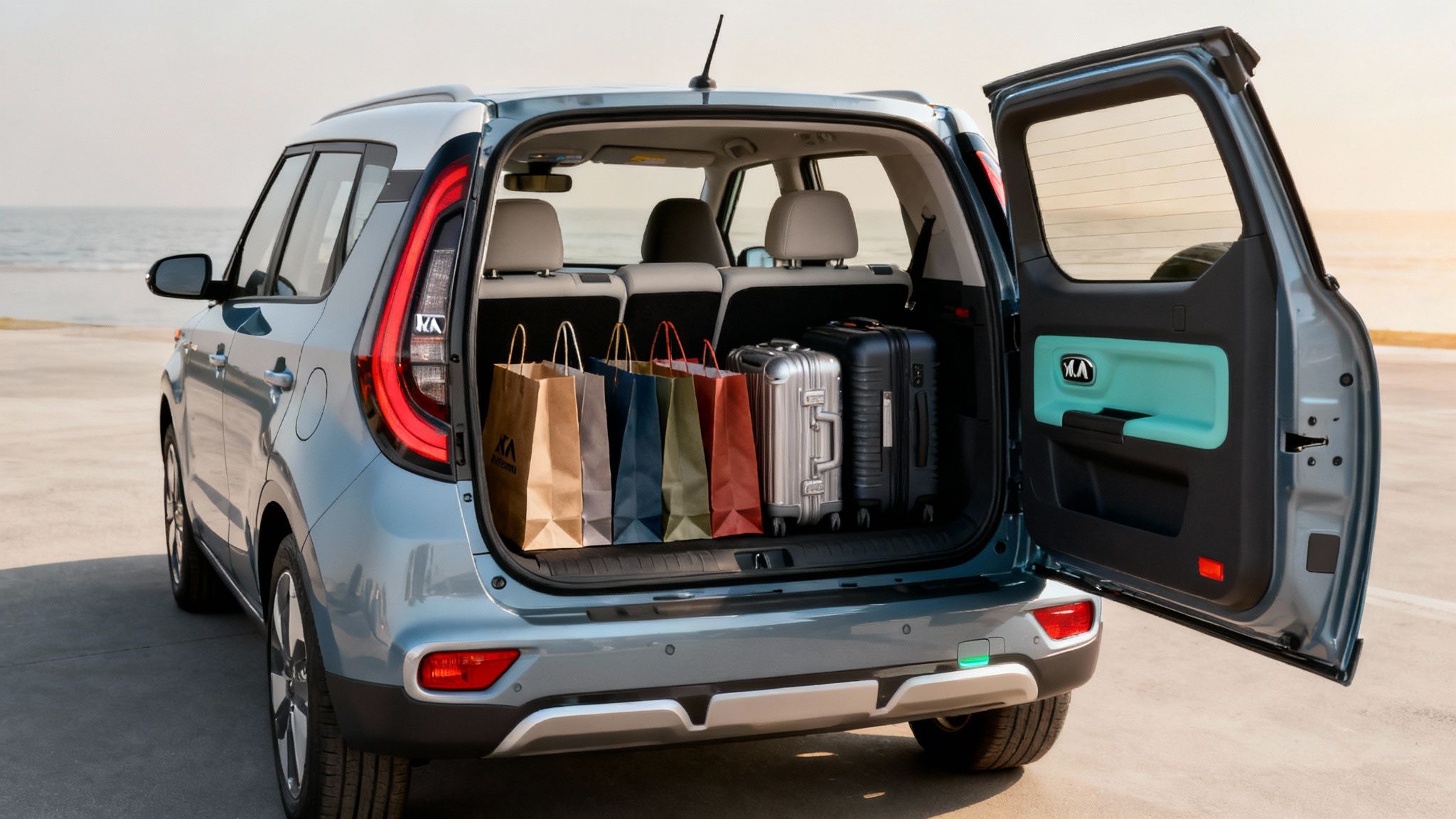
First up, the boot. At 315 litres with the rear seats up, it’s… okay. It'll handle the weekly shop or a couple of weekend bags without any fuss, but it's definitely smaller than key rivals like the MG ZS EV. If you're wrestling with pushchairs and all the paraphernalia that comes with a young family, you might find it a bit of a squeeze.
Fold those rear seats down, however, and the Soul EV’s boxy shape really comes into its own. You’re left with a cavernous, van-like 1,339 litres of space. Suddenly, that trip to IKEA doesn't seem quite so intimidating. Inside the cabin, storage is pretty good, with enough cubbies and pockets to lose your phone, keys, and that half-eaten packet of wine gums.
Crunching The Numbers
Now for the part that really matters: the money. As a used buy, the second-generation Soul EV offers fantastic value. You're getting a lot of battery for your buck, especially when you compare it to some of the competition from the same era.
When it comes to the day-to-day costs, this is where the Soul EV really starts to shine.
- Road Tax: Zilch. Nada. As a pure electric vehicle, you pay £0 in Vehicle Excise Duty.
- Maintenance: Say goodbye to oil changes and rusty exhausts. Regenerative braking also means your brake pads and discs last much longer. Servicing is generally much cheaper than for a petrol equivalent.
- Fuel Costs: Charging at home overnight is dramatically cheaper than a trip to the petrol station. Even with today's energy prices, the savings are massive. To see just how much you could save, check out our guide on the real cost of owning an EV compared to petrol cars.
The Kia Soul EV’s true appeal isn't just in its quirky looks, but in its fundamentally low running costs. It’s a car that saves you money every single day you own it, turning the dreary necessity of running a car into a much more palatable expense.
Insurance groups are reasonable for an electric car, typically sitting around group 20-25, which is on par with the Hyundai Kona Electric. When you add it all up, the Soul EV makes a very strong case for itself financially. It’s a smart buy that’s also refreshingly different from the norm.
So, What's the Final Word on the Kia Soul EV?
With Kia officially pulling the plug on UK sales, the Soul EV has become a piece of automotive history. But don't write it off as just another forgotten electric car – this quirky box on wheels was a true pioneer, one of the cars that helped make EVs a normal sight on British roads.
Its departure marks a full decade of Kia selling electric cars here, a journey that saw them go from shifting a few hundred Soul EVs to tens of thousands of electric models every year. In fact, Kia has now sold over 70,000 EVs in the UK, and you have to give the humble Soul a lot of credit for laying that groundwork. You can dive deeper into its legacy in this fascinating report on Kia's UK sales milestone.
What made the Soul EV special was its stubborn refusal to sacrifice practicality for swooping, "stylish" lines. It’s a car clearly designed from the inside out, putting headroom, visibility, and sheer ease of use first. That focus makes it an incredibly sensible and straightforward car to live with day-to-day.
Should You Still Buy One?
Yes, but it's not for everyone. If you’re the kind of person who values a high driving position, a properly spacious cabin, and rock-bottom running costs – and couldn't care less what the neighbours think – then a used Soul EV is one of the smartest buys on the second-hand market.
It’s a brilliant fit for:
- Urban Families: Perfect for the school run and the big weekly shop, especially if you have a smaller driveway to contend with.
- Taller Drivers: If you’re tired of cracking your head on the doorframe of sleeker, more fashionable EVs, the Soul will feel like a breath of fresh air.
- Pragmatic EV Converts: For buyers who just want a solid, reliable electric car with a decent real-world range, without paying a premium for a fancy badge.
The Kia Soul EV is a victory for common sense. It’s a brilliant reminder that a great car doesn’t need to be beautiful; it just needs to be brilliant at the job it was built for.
On the other hand, if you need a cavernous boot, crave a sporty, engaging drive, or just can’t get past its, let's be honest, toaster-like looks, then this isn't the car for you. There are plenty of compelling alternatives like the Hyundai Kona Electric or the MG ZS EV that offer a similar real-world range but with more conventional styling and bigger boots.
Ultimately, the Soul EV is a future classic of the early EV era. It’s a quirky, lovable, and deeply capable machine that proved different can be better. It truly deserves our respect.
Got a Question About the Kia Soul EV?
Still have a few questions buzzing around? You're not the only one. Here are some quick-fire answers to the things people ask most about this brilliantly boxy EV, saving you the hassle of digging through owner forums.
What's the Real-World Range of the Kia Soul EV in the UK?
Right, let's talk real numbers. For the second-generation model with the 64kWh battery, you’re looking at a solid 230-250 miles during the summer with a mix of driving.
But when the great British winter bites, that figure will realistically drop to around 180-200 miles . Cold weather zaps battery performance, and you'll be cranking up the heater, which also uses a fair bit of juice. For a deeper dive into why official figures can be a bit... optimistic, have a look at our guide on electric car range comparison for the UK and other lies.
Is the Kia Soul EV a Good Family Car?
Yes, it can be a fantastic family car, but with a couple of things to bear in mind. That boxy design is a winner for interior space, giving you brilliant headroom and proper legroom for four adults. No one's going to feel cramped in the back.
The only real compromise is the boot. At 315 litres , it's a bit on the small side. It'll swallow the weekly shop with no trouble, but a family trying to cram in a bulky pushchair and all the gear that comes with it might find it a tight squeeze.
On the whole, the Kia Soul EV is known for being a reliable workhorse, thanks to Kia's generally solid build quality. With any used EV, the big question is always battery health, but Kia's batteries have a good reputation for holding up well over time. Just make sure you insist on seeing a full service history to be on the safe side.


